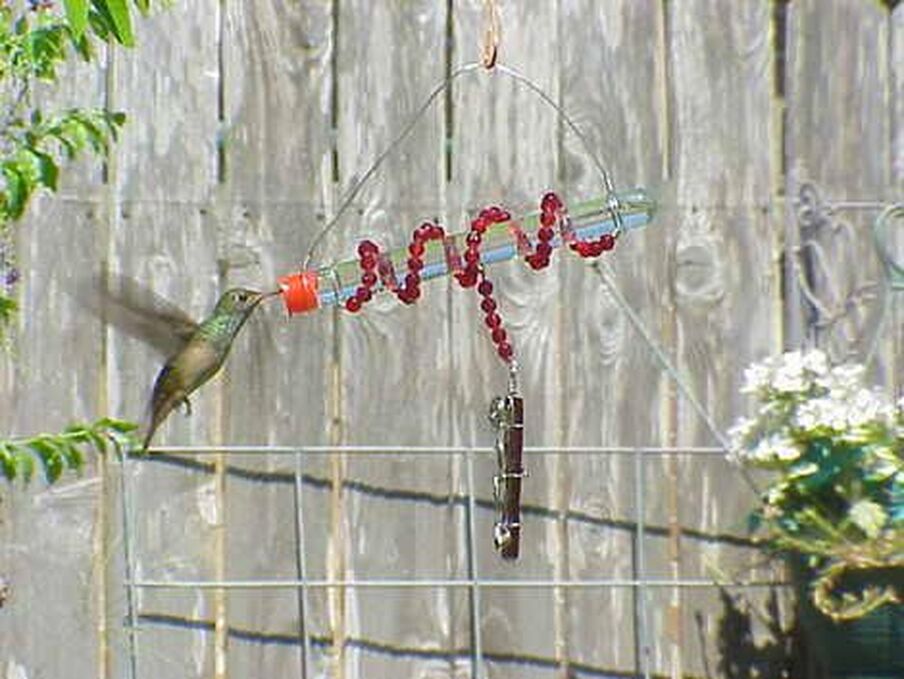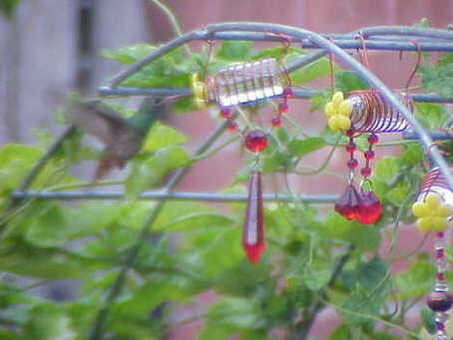DIY Hummingbird Feeders from Recycled Bottles
Making Hummingbird Feeders from Test Tubes
These tiny feeders are made from ordinary test tubes that can be purchased for pennies online. Test tubes now come in an assortment of colors with colored caps. Choose a clear test tube with a red cap, or get creative and go for colored tubes. You can find them on Amazon and a variety of science supply stores.
- Heat a small nail and create a hole in the center of the cap. This hole needs to be big enough for the hummingbird's beak to fit through comfortably. Although drilling a hole works fine, melting creates a slight lip inside the cap that prevents dripping.
- Attach the wire to the feeder by wrapping it tightly near the end of the test tube and leaving several inches as a hanger. Secure the other end near the cap. You may wish to wrap the tube with some bright red ribbon, beads, or any decorative red items that will attract the attention of hummingbirds.
- Hang the feeder from a tree branch or shady area on your deck so that the end with the opening is angled upward.
Making Hummingbird Feeders from Insulin Bottles
Insulin bottles make adorable little hummingbird feeders. When wrapped with copper wire and decorated with small beads, they catch the light and add sparkle in the garden, too.
- Soak the insulin bottles in hot, soapy water to remove all traces of insulin. Use a small brush to clean the insides thoroughly. It is vital that all traces of insulin have been removed.
- Insert the yellow flowers into the open end of the insulin bottle. You can reuse the yellow flowers from old hummingbird feeders or purchase replacement flowers for a few dollars on Amazon or through other bird feeder suppliers. These fit snugly in most insulin bottles, but be sure to check for a proper fit before collecting the bottles.
- If the flower does not fit snugly, you can use hot glue to secure them. Bear in mind that if you glue these in place, you will need to refill your bottles through the small hole in the center of the flower port. One hummingbird enthusiast uses a clean (new) syringe that comes with ink cartridge refills to fill the bottle with nectar right through the feeding hole.
Making Hummingbird Feeders with Decorative Bottles
You can use any glass or plastic bottle as a hummingbird feeder. Look for new and interesting containers with openings that will fit your hummingbird feeder parts. You can often find bottles at yard sales that you can purchase for pennies.
Don't forget that hummingbirds will drink from any feeder whether or not the opening has been fitted with a feeder part. Hanging small open-mouthed bottles that have been filled with nectar will attract hummingbirds to your yard. Open containers tend to attract ants and other pests, but as long as you are consistent with cleaning and refilling the containers they will provide a tasty treat for your hummingbirds.
Red glass is a wonderful way to attract hummingbirds and create a stunning feeder, but you don't need to stop with red. Once hummingbirds have discovered your feeders, they really don't care what color the feeder is. Collect a variety of colored bottles to create an eye-catching array of color in your garden.


